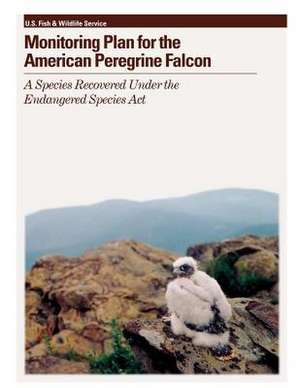Monitoring Plan for the American Peregrine Falcon
Autor Michael Green, Robert Mesta, Marie Morinen Limba Engleză Paperback
Preț: 108.14 lei
Nou
Puncte Express: 162
Preț estimativ în valută:
20.69€ • 22.13$ • 17.25£
20.69€ • 22.13$ • 17.25£
Carte disponibilă
Livrare economică 27 martie-10 aprilie
Preluare comenzi: 021 569.72.76
Specificații
ISBN-13: 9781479147724
ISBN-10: 1479147729
Pagini: 60
Dimensiuni: 216 x 280 x 3 mm
Greutate: 0.16 kg
Editura: CREATESPACE
ISBN-10: 1479147729
Pagini: 60
Dimensiuni: 216 x 280 x 3 mm
Greutate: 0.16 kg
Editura: CREATESPACE
